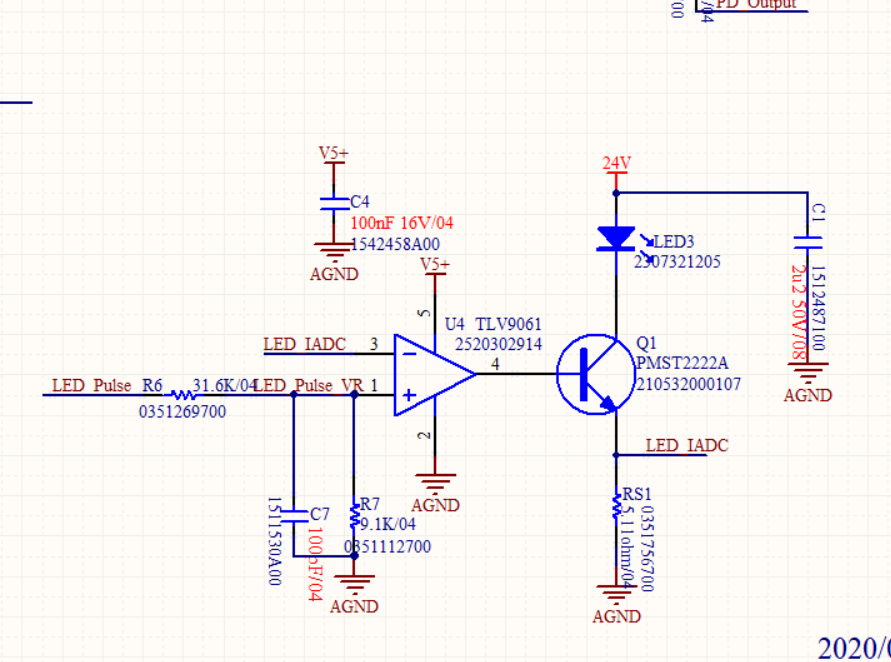Other Parts Discussed in Thread: LMV721, LPV821
Hi Team,
My customer used LM721 to implement below circuit for years without damage issue. Then, he changed to use TLV9061 for better cost advantage. Recently, he got 3 FA return units from his customer and TI help FA analysis that shows pin 3 got damaged and short to GND. This issue also be found at customer's factory at last manufacture, fail rate is 1/500.
Please comment is there any potential risk to use TLV9061 in below circuit and why LM721 doesn't have? What is the difference between these two parts?
Besides, any recommended parts that is P2P to TLV9061 for this application? The criteria is GBW>5MHz, slew rate > 2V/us.
LED_Pulse from MCU, 5V level, PWM frequency is 10KHz, on duty is 2uS.
Thanks a lot.
Vincent Chen


